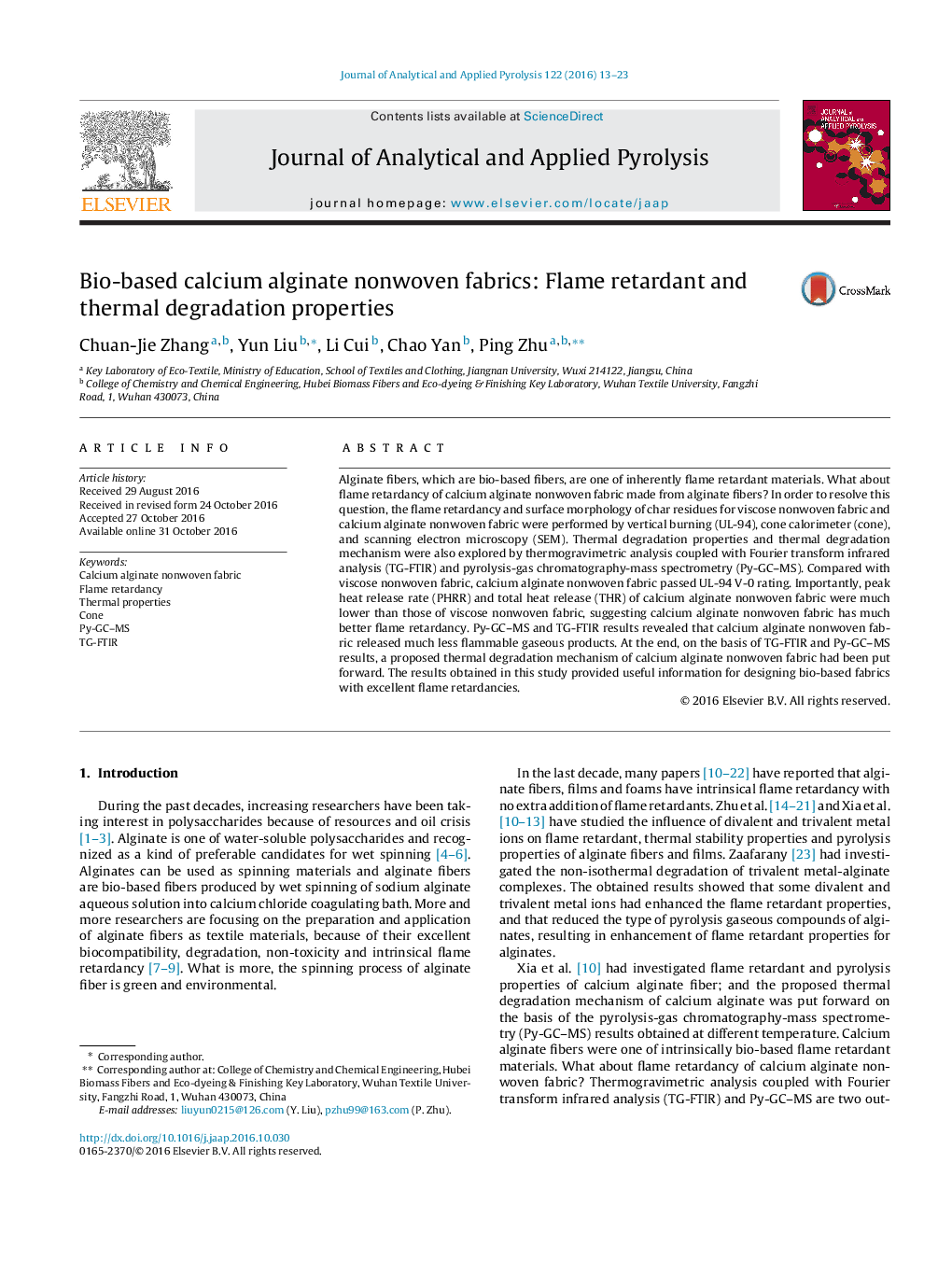| Article ID | Journal | Published Year | Pages | File Type |
|---|---|---|---|---|
| 5134750 | Journal of Analytical and Applied Pyrolysis | 2016 | 11 Pages |
â¢Compared with viscose nonwoven fabric, calcium alginate nonwoven fabric owns much better flame retardancy.â¢Pyrolysis process of calcium alginate produces much less types of gases.â¢Possible thermal degradation mechanism of calcium alginate is speculated on the basis of TG-FTIR and Py-GC-MS results.
Alginate fibers, which are bio-based fibers, are one of inherently flame retardant materials. What about flame retardancy of calcium alginate nonwoven fabric made from alginate fibers? In order to resolve this question, the flame retardancy and surface morphology of char residues for viscose nonwoven fabric and calcium alginate nonwoven fabric were performed by vertical burning (UL-94), cone calorimeter (cone), and scanning electron microscopy (SEM). Thermal degradation properties and thermal degradation mechanism were also explored by thermogravimetric analysis coupled with Fourier transform infrared analysis (TG-FTIR) and pyrolysis-gas chromatography-mass spectrometry (Py-GC-MS). Compared with viscose nonwoven fabric, calcium alginate nonwoven fabric passed UL-94 V-0 rating. Importantly, peak heat release rate (PHRR) and total heat release (THR) of calcium alginate nonwoven fabric were much lower than those of viscose nonwoven fabric, suggesting calcium alginate nonwoven fabric has much better flame retardancy. Py-GC-MS and TG-FTIR results revealed that calcium alginate nonwoven fabric released much less flammable gaseous products. At the end, on the basis of TG-FTIR and Py-GC-MS results, a proposed thermal degradation mechanism of calcium alginate nonwoven fabric had been put forward. The results obtained in this study provided useful information for designing bio-based fabrics with excellent flame retardancies.
